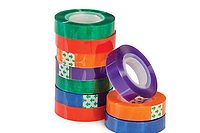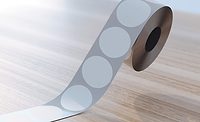Evolving Solvent-Based Pressure-Sensitive Adhesives
Developments in the construction of high-solids solvent pressure-sensitive adhesives are enabling a range of new products and increasing the toolbox for formulators.

Sustainability is an ever-present driver for new products and applications. In pressure-sensitive adhesives (PSAs), sustainability is sometimes an underlying influence in the move from solvent- to emulsion-based products. This is not an option for all applications, however, as solvent-based PSAs give increased performance and processability compared to emulsion PSAs.
In a solvent-based PSA, the polymer enabled in the adhesive is more cohesive due to crosslinking, more chemically resistant, and can operate over a higher temperature range than a similar emulsion-based PSA. As a result, solvent-based PSAs empower more durable applications and find wide use across various markets, including building and construction, medical, tapes, and graphics.
How then can companies continue to drive sustainability initiatives while also using solvent-based adhesives? One way to accomplish this is to adjust to a higher-solids solvent PSA.
Increasing Solids Content
While multiple benefits come with using higher solids, there are also several challenges. Increasing the solids of a formulation can cause processing issues, defects, and slower drying times if not formulated correctly. A delicate balance is needed to increase the solids without increasing the viscosity to a level that the product becomes more difficult to coat properly.
The most commonly used solvents have an affinity for the acrylic polymer; with a higher solids/higher viscosity product, the solvent has a harder time leaving the film. This can cause film defects when aiming for low solvent retention. Oven capacity and airflow can drive the solvent out of a higher viscosity product, but line speeds will need to decrease if the oven capacity isn’t available. This is the ever-challenging quandary that formulators face when increasing solids specifically for solvent-based products.
Fortunately, developments in the construction of high-solids solvent PSAs are enabling a range of new products and increasing the toolbox for solvent acrylic PSA formulators. The first development involves polymer design.
Historical polymers had higher molecular weights, which contributed to an increase in viscosity if solvent content was driven lower. New polymers are being designed to have lower molecular weights, enabling lower initial viscosity. These new polymers are assisted by more efficient and effective crosslinking systems that help build the molecular weight needed in the final product for optimal performance. This crosslinking functionality is the second development in the toolbox of high-solids solvent PSA formulation.
One issue that can develop from the increased crosslinker level is an undesired viscosity build over time, thus shortening shelf life. While previous products had a shelf life of 3-6 months, an increase in crosslinker levels can decrease this significantly. However, developing a customized solvent package can drive increased stability. Solvent blending and solvent/polymer compatibility are an art form. As the range of acrylic polymers expands, so does the need for new and novel solvent packages.
Solvent package development is the third tool in the formulator toolbox. Historical solvents (e.g., hexane and toluene) have become more regulated, so new solvent choices are being formulated to give a wider range of options. These new solvents, in combination with polymer design and crosslinking advancements, can enable an adhesive viscosity range that is workable at thin coat weights. Solvents with less affinity for acrylic polymers can be driven off the adhesive package faster and with less heat.
Generating Additional Value
Once the initial hurdle of harder-to-process, higher-solids solvent acrylic PSAs has been conquered, additional value can be generated in the areas of sustainability (e.g., reduced VOC levels), continuous improvement, and profitability. For example, the higher-solids product facilitates more adhesive per packaging unit for the customer. With less solvent being shipped, customers get more value.
Less waste adhesive remains in the packaging due to less residuals, which also leads to a reduction in transport required for the same amount of adhesive. This translates to potential savings in supply chain and transportation costs.
Multiple continuous improvement-related efficiencies can be achieved, including less stress on asset utilization, increased capacity of flammable storage, reduced container movement on site, and lower risk of accidents due to less product movement. Cost reduction is also generated in the form of improved productivity, reduction of annual volume of liquid adhesive used, and less “incoming” quality testing, along with reduced energy cost in manufacturing. Indeed, the decrease in annual adhesive spending can be as much as 20%.
Continually Improving
Solvent-based acrylic PSAs are needed in the market for the durability and functionality they provide. Companies can continue to improve on their sustainability goals with the multiple facets of efficacy that are enabled with the options possible in the utilization of effectual high-solids solvent acrylic PSAs.
For more information, contact the lead author at ann.mcglone@ashland.com or visit www.ashland.com.
Looking for a reprint of this article?
From high-res PDFs to custom plaques, order your copy today!





